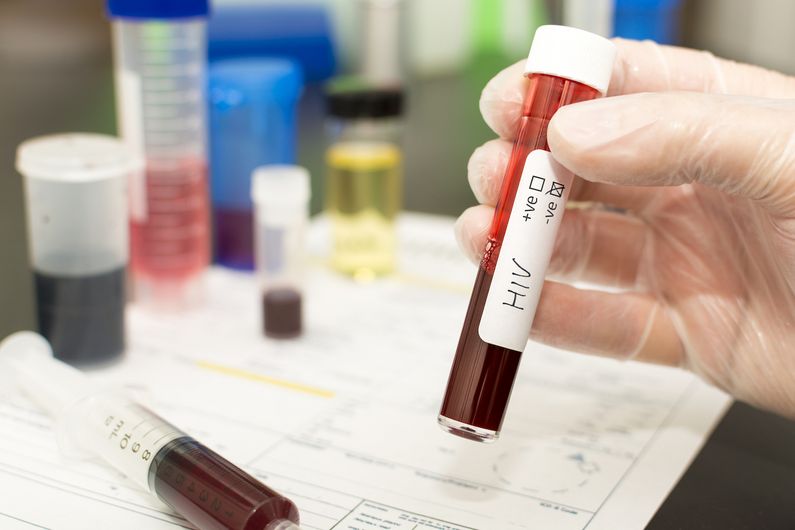A protein helps HIV remain silent
- Salle de presse
06/20/2023
- Bruno Geoffroy
Researchers in Montreal and Brussels have identified a molecule that allows HIV to evade the immune system and that may prove to be a good therapeutic target.
Throughout the course of antiretroviral therapy, HIV hides quietly in reservoirs inside CD4+ T lymphocytes, white blood cells that play a role in activating the immune system against infection.
The existence of these viral sanctuaries explains why antiretroviral therapy has to be maintained throughout a patient’s lifetime in order to keep the virus from replicating.
In the journal Cell Reports, a research team led by Université de Montréal medical professor Petronela Ancuta and her PhD student Debashree Chatterjee today show for the first time that a protein, the aryl hydrocarbon receptor or AhR, plays a crucial role in this viral latency.
“In our study, we show that AhR, a transcription factor regulating the expression of certain genes, has an antiviral effect in patients’ CD4+ T cells," said Ancuta. "To help HIV remain silent in reservoir cells, the molecule has an effect on the expression of HIC1, another transcription factor known to inhibit HIV replication."
To prove it, the scientists used the CRISPR/Cas9 system to knock out the expression of AhR. They also used drugs that induce or block AhR activation. With these two approaches neutralizing AhR activity, the team observed that viral growth occurred in CD4+ T cells of people living with HIV and on antiretroviral therapy.
'Shock and kill'
Ancuta and Chatterjee, the study’s first author, and their colleagues therefore propose using drugs that inhibit AhR activity as a “shock and kill” type of elimination strategy. Once reactivated in the presence of AhR inhibitors (shock phase), the HIV-infected cells are then visible to the immune system and can be targeted and killed.
In certain types of cancerous tumours, the AhR pathway is activated by molecules from the environment, such as cigarette smoke, pollutants or ligands derived from gut microbiota and cellular metabolism. The resulting anti-inflammatory activity prevents adequate anti-tumour immune response.
“In clinical trials, drugs that block AhR are already used to fight cancer," said Ancuta, a researcher at UdeM's teaching hospital's research centre, the CRCHUM. "In further studies, we hope to test these inhibitors to see if we can eliminate the HIV or considerably reduce the size of viral reservoirs in people living with HIV who are on antiretroviral therapy."
To better grasp the molecular mechanism occurring behind this viral latency, Ancuta will continue to collaborate with Carine Van Lint, a specialist in HIV transcription at Université libre de Bruxelles, and with McGill University medical professor Jean-Pierre Routy to validate this new therapeutic target.
“Today, we have succeeded in showing in patients’ cells how this AhR pathway is activated," said Ancuta. "With the help of state-of-the-art technology such as spatial transcriptomics, we want to go further and specifically characterize it in the tissue of people living with HIV. That would allow us to validate this therapeutic target in humans in the context of HIV."
According to the World Health Organization, at the end of 2021 more than 38 million people were living with HIV.
About this study
"Identification of aryl hydrocarbon receptor as a barrier to HIV-1 infection and outgrowth in CD4+ T-Cells," by Debashree Chatterjee et al, was published June 12, 2023 in Cell Reports. The study received funding from the Canadian HIV Cure Enterprise (CanCURE) through the Canadian Institutes of Health Research, Université de Montréal, the Fonds de Recherche du Québec-Santé and the Fondation du CHUM.
About the CRCHUM
The CHUM Research Centre (CRCHUM) is one of North America’s leading hospital research centres. It strives to improve the health of adults through a continuum of research spanning disciplines such as basic science, clinical research and population health. More than 2,150 people work at the CRCHUM, including nearly 500 researchers and nearly 650 students and postdoctoral fellows. crchum.com
Media contact
-
Bruno Geoffroy
CRCHUM
Tel: 514 890-8000, p. 30872













